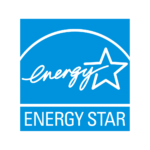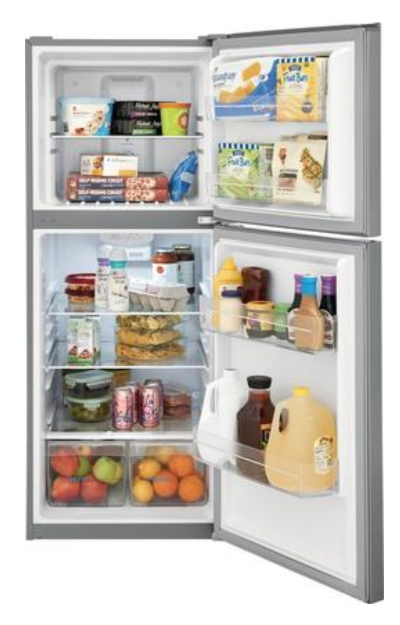01 - Stop using power when you sleep.
02 - Measure phantom loads.
First thing to do is an energy audit. The P3 International P4460 Kill A Watt EZ Electricity Usage Monitor available on Amazon for about $50 is a good investment. Here's why:
- You can find out what devices use electricity when they are not in use.
- You can calculate power saving by turning the device off and measure the $$$ saved by comparing hydro bills.
- You can use it to compare energy use efficiency with a replacement that may pay for itself sooner than you think.
03 - Disconnect phantom loads not in use.
04 - Replace all light bulbs with LED lights.
Lighting Choices That Save You Money
 The light-emitting diode (LED) is one of today's most energy-efficient and rapidly-developing lighting technologies. Quality LED light bulbs last longer, are more durable, and offer comparable or better light quality than other types of lighting.
The light-emitting diode (LED) is one of today's most energy-efficient and rapidly-developing lighting technologies. Quality LED light bulbs last longer, are more durable, and offer comparable or better light quality than other types of lighting.
Check out the top 8 things you didn't know about LEDs to learn more.
Energy Savings
LED is a highly energy efficient lighting technology, and has the potential to fundamentally change the future of lighting in the United States. Residential LEDs -- especially ENERGY STAR rated products -- use at least 75% less energy, and last 25 times longer, than incandescent lighting.
Widespread use of LED lighting has the greatest potential impact on energy savings in the United States. By 2027, widespread use of LEDs could save about 348 TWh (compared to no LED use) of electricity: This is the equivalent annual electrical output of 44 large electric power plants (1000 megawatts each), and a total savings of more than $30 billion at today's electricity prices.
So what does it all mean for switching to an all LED bulb household?
- Swapping Out Incandescent. If you’re using incandescent bulbs, it’ll pay off immediately to switch to LED. You’ll outlay roughly $140 for 40 LED bulbs initially to replace your 40 incandescent bulbs. But you’ll save roughly $300 annually in energy costs. And one LED bulb will last about 20 times longer than an incandescent. That’s a no-brainer.
- Swapping Out CFL. If you’re using CFL, switching them out to LED all at once may not be quite as clearly beneficial. If you spend $140 for 40 LED bulbs as an initial outlay, the average American household will save roughly $25 in energy costs annually over 40 CFL bulbs. It’ll take nearly six years to receive your return on the initial $140 spend in terms of energy cost savings.
- Swapping Out a Mix. Now most people probably have a mix of incandescent and CFL bulbs (and maybe a few LEDs too) in their homes. We’d recommend immediately swapping out any incandescents for LEDs. Beyond that, it’s probably smartest to just swap out CFLs for LEDs when the CFLs burn out or when you want an improved look to your light. You aren’t going to have a huge energy cost savings by replacing CFLs that still have life in them for LEDs.
Because there’s no significant hurry to swap out CFLs for LEDs to save a bunch of money, we’d recommend waiting and watching the price of LED bulbs. When you see a significant sale on them, say for $2.75 per bulb or less, pick up several of them, as you’ll receive your return on your spend more quickly versus if you’re spending $3.50 or more per bulb. At $2.75 per LED bulb, the average American would receive a return on the upfront cost on 40 light bulbs in about four years instead of six, for example.
05 - Leverage Cost Efficiencies
In this Blueprint the word leverage is used in the following context.
Leverage is something you already have to achieve something new or better.
When one of the methods above, like the power bar, is used to control phantom loads, it becomes something you have. Each time the power bar saves energy, it becomes something new or better. In this case money saved is an economic gain. What's better is the ecologic impact reduces demand for energy at the source.
Start with a Cost Efficiency Calculator
- Make a list of your major appliances and arrange them in order of age.
- Count money saved from reducing phantom loads as a discount on the price of a new appliance with better efficiency.
- Next shop for a new appliance that fits your budget and use your savings from phantom load reduction to pay for a new more efficient appliance.
- If you can find a dealer who takes trade-ins and will discount the price of a new appliance, you get a discount and do not have to pay a removal fee. Otherwise look for a repair shop that will buy your (less efficient) and in good working condition appliance.
- A week before the next big sale like Black Friday or Boxing day or Amazon, put your old appliance for sale on Craigslist or other local classified ad directory. Price your old appliance 10% or more than what the repair shop will pay you. For example: Well maintained used appliance for sale. $50 or better offer.
At this point your leverage includes:
- cash saved from something you have like phantom load management, LED bulb replacement etc.
- discount or cash from best offer of 3 different sale options
- if sold the old used appliance will likely be reused or recycled
- you get the best price on a new eco-eco friendly appliance



